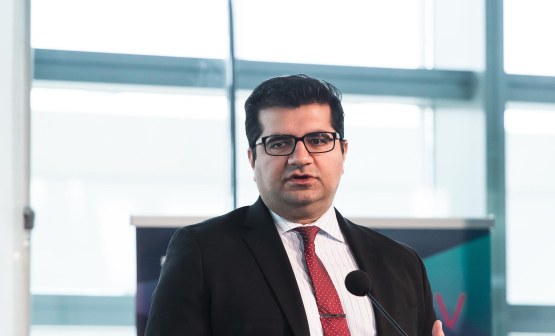Connect.gov looks to balance convenience with privacy
The success of Connect.gov, a platform that’s meant to make it easier to access government sites, hinges on user privacy, leaders behind the scenes say.
“If you’re a user … you want convenience, and you want trust,” Jennifer Kerber, director of Connect.gov, said last Thursday during a panel at the General Services Administration’s DigitalGov Citizen Services Summit. “So how do I give that to you in a manner that you understand without rolling out all the government speak?”
Under Connect.gov, officials are trying to create a way to access services governmentwide using a single login. It’s a joint effort between program manager GSA; the U.S. Postal Service, which is handling the technology backbone of the program; and the National Institute of Standards and Technology’s National Strategy for Trusted Identities in Cyberspace, which is developing the secure identity ecosystem for the service. It also uses Google, ID.me, PayPal, Verizon and Yahoo as secure sign-in partners.
Kerber said her office is in the middle of testing how it can make users feel more comfortable sharing their identities without sacrificing convenience. Users don’t want to share certain attributes, but testing shows there are ways to compromise, she said.
“People don’t want the government to make sure they are who they say they are,” Kerber said. “But if I say, ‘We want to authenticate your identity to make sure nobody is pretending to be you,’ you are all over that. It’s a simple change, but it’s user research that helps us do it.”
NIST plans to release a NSTIC privacy engineering risk framework for public comment soon, said Sean Brooks, a NIST privacy engineer who said the framework “is the summation of our work to date.”
“User centricity” is something NSTIC has focused on in its work around privacy, Brooks told the audience. And he said it’s important to go beyond a conventional privacy policy to lessen risks.
“In reality, writing a really long, complex privacy policy is an excellent way to push all of the decision about privacy onto the user because the organization does not have to do anything,” he said. “That doesn’t necessarily mitigate any actual risks that you might have for individuals when they engage in your system.”
Rather, Brooks said, it’s important to build controls that mitigate the risks and make users comfortable.
Connect.gov has that privacy built in, Kerber said. “I think you know right now if you use your Google ID and log in somewhere, when you return they will try to show you shoes you looked at because they are tracking you and keeping that marketing data. If you use Google through the Connect.gov hub, we prevent that. They do not know in government where you go in the agencies, do not know what provider you use — they just know you are who you say you are.”
Dan Morgan, chief data officer of the Transportation Department, reiterated that no matter how beautiful Connect.gov or any digital service is, if people don’t feel safe using it, they won’t. For that reason, he said, “it is very important we address these user experience things early on and make sure people who are building the services understand what we are trying to do and how they can best address the risks.”





